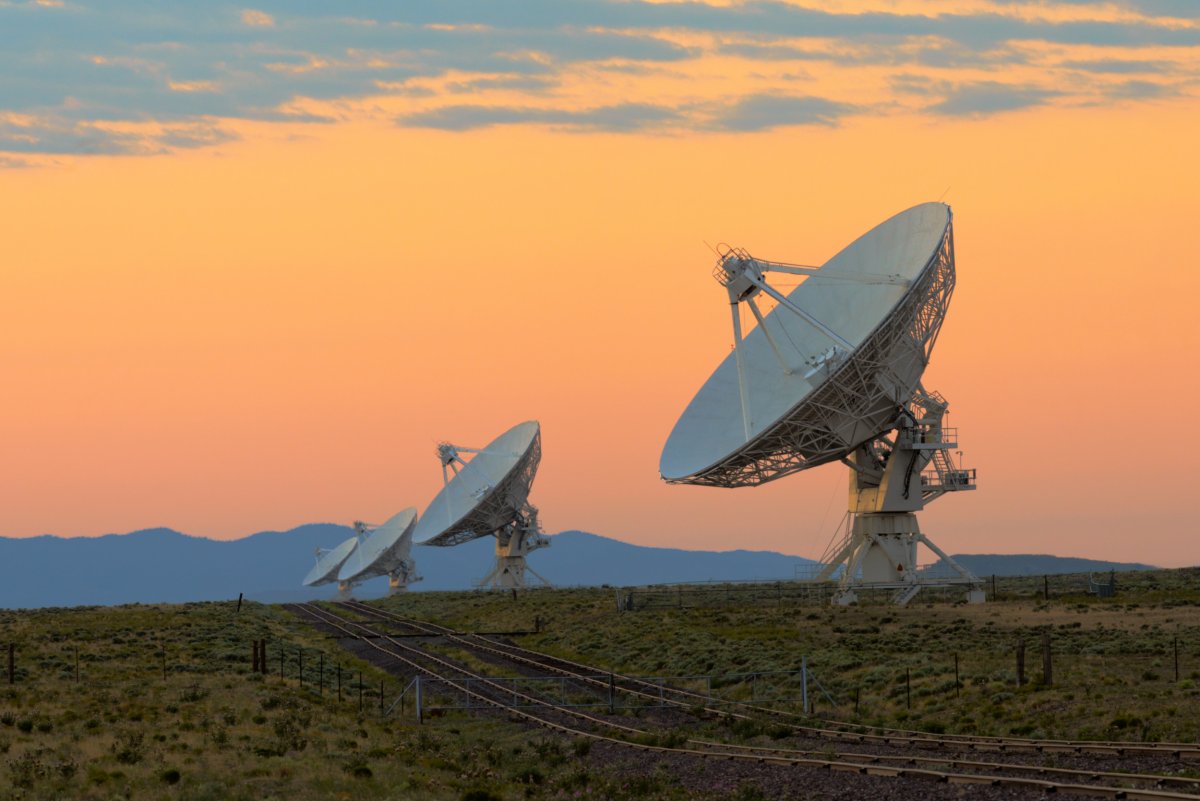Scientists have detected a mysterious radio signal, described as "very strange," from the center of our own galaxy—and they're eager to see if it happens again.
The international group of researchers published their discovery on the arXiv pre-print repository and have submitted their article to the Astrophysical Journal.
In the study, they describe the radio signal ASKAP J173608.2−321635, which was detected by scanning the sky for radio signals as part of the Australian ASKAP VAST survey.
The source of the signal was close to the middle of the galaxy, around four degrees from the galactic center. It also repeated itself, and was detected six times between January and September 2020.
A follow-up search with the MeerKAT telescope found the signal once again in February 2021, when it briefly flashed before fading away again.
The researchers are puzzled. According to the study, possible sources of the signal include a dim low-mass star or something extremely energetic, like a pulsar or a magnetar. However, the study adds, "none of these fully explains the observations."
It's easy for the imagination to stray to the possibility of an intelligent source—a distant alien civilization beaming out their existence to other aliens like us who happened to be looking in the right place at the right time.
Unlikely, says the team. "The signals we have detected are almost certainly astrophysical, meaning they are from a star or other astronomical object, not from another civilisation," Ziteng Wang, one of the paper's authors from the Sydney Institute for Astronomy, told Newsweek. "The main evidence for this is that they are 'broadband,' spanning the entire frequency spectrum."
But it's still mysterious. One of the reasons why is that the source of the signal didn't emit anything else, said Matt Bothwell, public astronomer at the Institute of Astronomy, University of Cambridge.
He told Newsweek: "The problem is that [the source] didn't emit any other type of signal, apart from this radio burst. If this thing was any known object, it would have emitted lots of other radiation like high energy X-rays at the same time. But ASKAP J173608.2−321635 seems to have sent out a radio wave burp, and nothing else. Very strange."
While disappointing for alien fans, even radio signals with natural sources can help scientists in their search for alien life.
Wang's research focuses on radio signals from astronomical objects, and one possible explanation is a burst from a very faint star. "By analyzing the intensity of bursts from other stars, we can work out whether any planets they host are suitable for life," he said.
And although aliens would be an exciting possibility, detecting a new kind of cosmic phenomena would be a close second.
"When Jocelyn Bell first spotted pulsars in their radio data, the team called the signal LGM-1, for Little Green Man… and I think they were only half-joking," said Bothwell, referring to the astrophysicist who first discovered radio pulsar stars.
"Of course the signal wasn't aliens, but it was a discovery that revolutionized astrophysics. So 'it's not aliens' isn't at all a boring and disappointing option! Discoveries like this, that sit just beyond the border of our existing knowledge, are one of the main drivers of scientific discovery. I can't want to see what the answer turns out to be!"
For now, the team are hoping to find the radio signal again to get more data and confirm some possibilities about its source. Since the signal seems to be appearing and disappearing irregularly, this is proving challenging. Wang said: "We have to do more observing and hope we catch it!"
Mysterious radio signals from space are not unheard of. Perhaps the most famous is the Wow! Signal, a powerful narrowband radio blip detected by the Big Ear Radio Telescope in Ohio in 1977.
The 72-second long signal was so shocking that one astronomer who spotted it in the data days later printed it out and wrote "Wow!" across the page.
Despite follow-up attempts to find the signal again, researchers haven't been able to spot the Wow! Signal recurring.
"Was that E.T. or was it not E.T.? Nobody knows," Seth Shostak, senior astronomer at the SETI Institute, told Astronomy magazine in 2020.
Wang told Newsweek the Wow! signal is still a mystery, but that "it is likely that it is either astrophysical, or a human-made artefact detected by the telescope accidentally."

Uncommon Knowledge
Newsweek is committed to challenging conventional wisdom and finding connections in the search for common ground.
Newsweek is committed to challenging conventional wisdom and finding connections in the search for common ground.
About the writer
To read how Newsweek uses AI as a newsroom tool, Click here.








